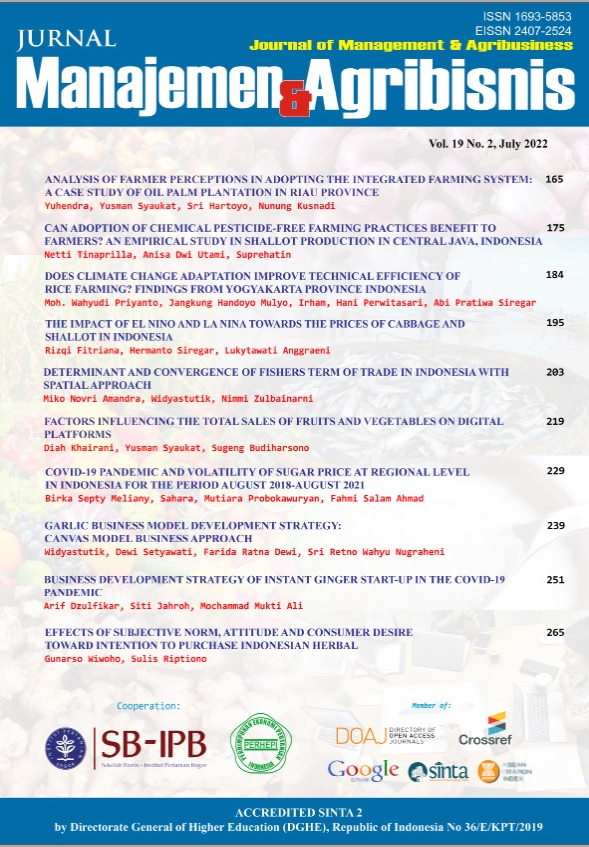Can adoption of chemical pesticide-free farming practices benefit to farmers? An empirical study in shallot production in Central Java, Indonesia
Abstract
This study aims to provide empirical evidence in the shallot production in Indonesia, what drives farmers to adopt chemical pesticide-free production as sustainable agricultural practices and its impacts on farmers’ income. By using national agricultural survey in 2014, this study employed logit regression and regression analysis to estimate the determinants and impacts of adoption of chemical pesticide-free farming practices among shallot farmers in Central Java. The results of a logit regression model showed that level of education, type of land ownership, participation in farmers group, source of fund, certified seed cost, and cost production were significantly associated with decisions to adopt chemical pesticide-free farming practices. The results of a regression model showed that farmers who adopted chemical pesticide-free farming practices had higher income. Aside the chemical pesticide-free adoption factor, the results showed that farmers’ income from shallot farming were influenced by level of education, harvested area, type of land ownership, cooperative membership, access to credit, access to extension services, and cost of certified seed. Future research may consider the different level of usage of non-chemical inputs among shallot farmers as the adoption is a process and dynamic, taking into account both other potential determinants of adoption and other potential factors affecting farm profitability, and focusing on shallot traders, wholesalers, retailers, and consumers.
Keywords: agricultural production, famers income, pesticide-free, shallot, sustainable agricultural practice
Authors
Authors who publish with this journal agree to the following terms:
- Authors retain copyright and grant the journal right of first publication with the work simultaneously licensed under a Creative Commons Attribution License that allows others to share the work with an acknowledgement of the work's authorship and initial publication in this journal.
- Authors are able to enter into separate, additional contractual arrangements for the non-exclusive distribution of the journal's published version of the work (e.g., post it to an institutional repository or publish it in a book), with an acknowledgement of its initial publication in this journal.
- Authors are permitted and encouraged to post their work online (e.g., in institutional repositories or on their website) prior to and during the submission process, as it can lead to productive exchanges, as well as earlier and greater citation of published work (See The Effect of Open Access).

